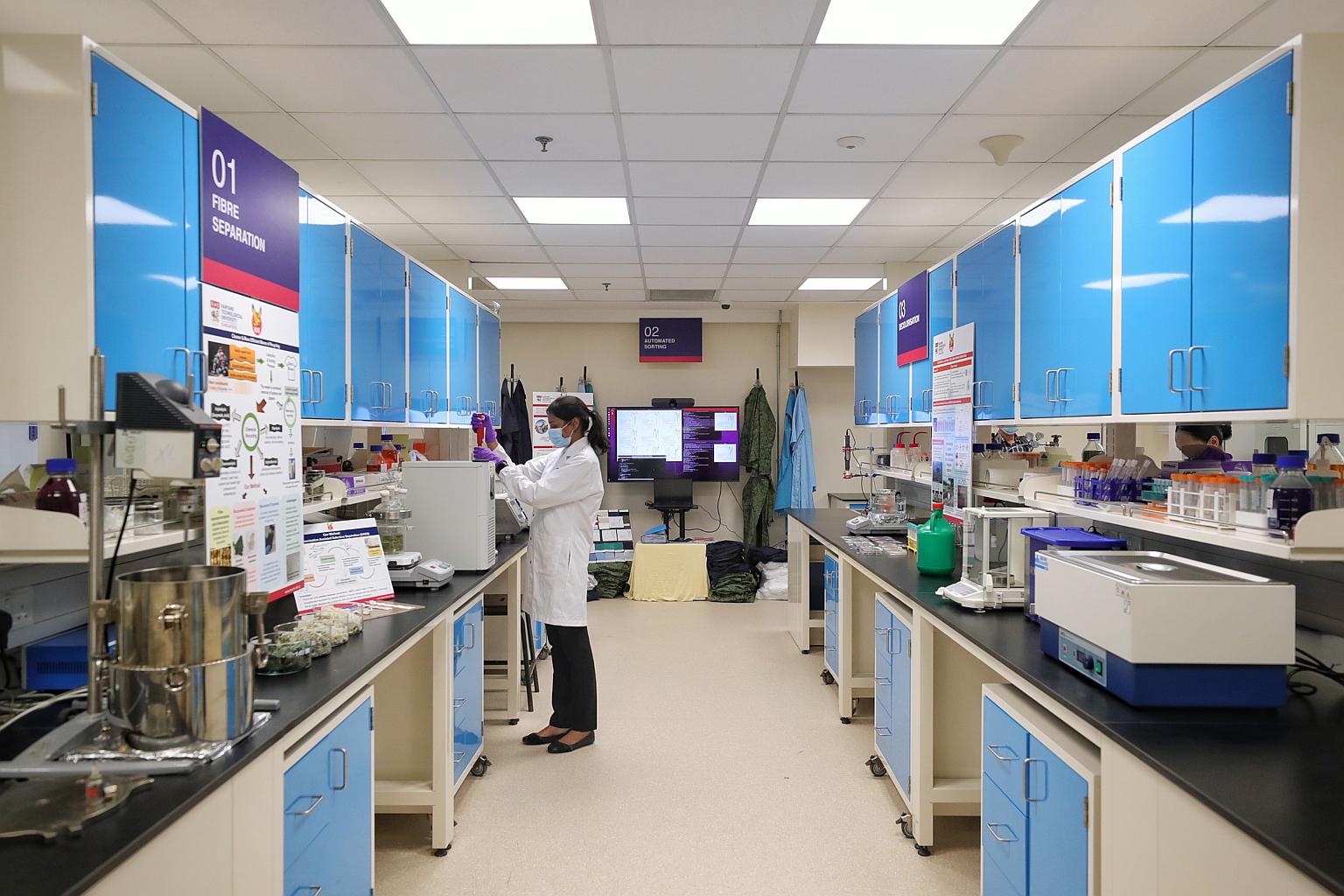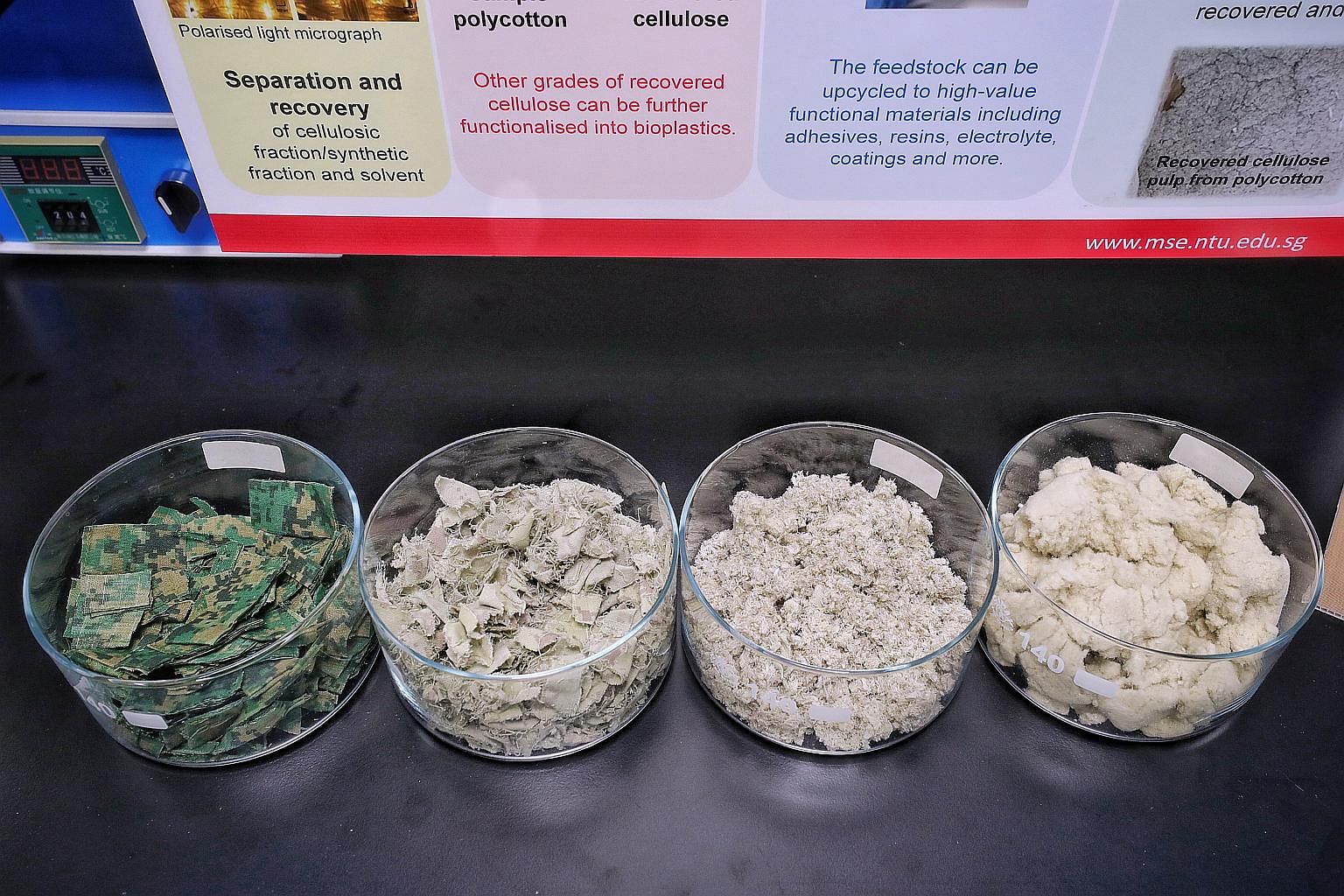New research centre and future recycling plant mark S'pore's first attempt at recycling used textiles
Sign up now: Get ST's newsletters delivered to your inbox

A researcher works in the new RGE-NTU Sustainable Textile Research at NTU on Aug 4, 2022.
ST PHOTO: KEVIN LIM
Follow topic:
SINGAPORE - A pilot textile recycling plant will open in Singapore as early as 2024, as part of an overall investment into Singaporean textile recycling capacities.
Part of these investments include a new textile recycling research centre that opened on Thursday (Aug 4).
The new research centre and eventual recycling plant - which would produce new fabrics and materials from used fabrics, such as old clothes - mark Singapore's first attempt at recycling used textiles, beyond reusing them.
Research from the centre will be piloted at the nation's first textile recycling plant, which will recycle 8,760 tonnes of fabric waste per year at full capacity. This is equivalent to the weight of 58.4 million T-shirts.
The new research centre in Nanyang Technological University (NTU) comes from a $6 million investment from Royal Golden Eagle (RGE), a global resources-based manufacturing group and the world’s largest producer of viscose.
RGE executive director Perry Lim said there is an urgent need to begin recycling textile waste in Singapore, as he said the Republic produced 189,000 tonnes of textile waste last year, from sources like discarded clothing, linens and bags.
Mr Lim said: "Currently, only 4 per cent of textiles are being (repurposed) and are either given to lower-income families or exported to other countries."
Furthermore, after the clothing has completely deteriorated in quality, it is ultimately thrown away and wasted.
Therefore, Mr Lim said it is important to develop new and better ways of recycling textiles into higher-quality materials to increase the lifespan of raw materials such as cotton.
However, recycling fabric waste has many challenges, said Professor Hu Xiao from the NTU School of Materials Science and Engineering, one of which is the separation of combination fibres used frequently in clothing - such as the cotton-polyester blend.
Prof Hu, who co-leads the new RGE-NTU Sustainable Textile Research Centre, said: "These blended fibres are actually a weave of cotton and polyester fibres twisted in a very thin diameter."
He added that separating them mechanically would be too complicated and also make the constituent fibres unusable.
But he said the centre aims to overcome this difficulty by dissolving such fibres chemically to retrieve their base materials.

In the case of the cotton-polyester blend, these would be cellulose - found in the walls of plant cells - and recovered polyester, which is a kind of plastic.
Prof Hu said the cellulose would then be converted into viscose, which is made primarily of cellulose, and recovered polyester could be used in a myriad of things, such as clothes and adhesives.
Presently, Prof Hu said the chemical process developed at the centre can break down a textile made of cotton-polyester blend into its base materials in under two hours.
The centre, which is also led by Dr Jaroslav Stavik, head of RGE R&D, will also search for ways to strip dye from fabrics without using toxic chemicals like bleach, among others, to make the fabric recycling process less environmentally harmful and cheaper.
Although there are presently textile recycling efforts in the United States, Europe and Asia, Prof Hu said most of these centres focused on repurposing the fabrics with some slight chemical treatment.
He added that many of these efforts are by start-ups which can lack expertise and scale.
Prof Hu said: "This collaboration between NTU and RGE is really the first of its kind."

